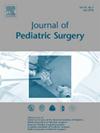在儿童内生趾甲手术中,虚拟现实分心对疼痛、压力和心率的影响:一项随机对照试验。
IF 2.5
2区 医学
Q1 PEDIATRICS
引用次数: 0
摘要
目的:沉浸式虚拟现实(VR)显示了减少儿童手术疼痛和压力的有效性,但研究仍然存在异质性,并且将压力与焦虑混为一谈,而忽略了心率(HR)等生理指标。目标导向注意力的作用仍未得到充分探讨,因为没有研究控制vr交互作用,以分离其在临床相关条件下的贡献。因此,本RCT研究了目标导向VR、自由互动VR和标准护理(SoC)分心(对照)对儿童和青少年局部麻醉下内生趾甲手术中自我报告的疼痛、压力和HR的影响。研究设计:60名10-17岁的患者(Mage=13.90, SDage=1.85, 23%女性)被随机分为(1)有特定任务的专注VR组,(2)无任务的探索性VR组,或(3)SoC对照组。采用线性混合效应模型对患者自我报告的疼痛(VAS,主要结局)、自我报告的压力和HR(均为次要结局)进行分析。结果:自我报告的疼痛和压力在围手术期遵循预期的轨迹,没有VR的总体益处。探索性VR与手术中较高的自我报告疼痛和较小的术后压力减轻有关。与对照组相比,两种VR条件都显著降低了麻醉(插针阶段)期间的HR,这种影响在探索性VR组中持续到手术后期。结论:虽然两种虚拟现实条件都降低了生理唤醒,特别是在麻醉期间,但集中虚拟现实对自我报告的疼痛和压力有一定的好处。研究结果强调了研究基于vr的分心的认知任务需求的必要性,并提出了局部麻醉下儿科手术的可行性。本文章由计算机程序翻译,如有差异,请以英文原文为准。
Effects of virtual reality distraction on pain, stress, and heart rate during pediatric ingrown toenail surgery: A randomized controlled trial
Objective
Immersive virtual reality (VR) shows efficacy in reducing pediatric procedural pain and stress, yet studies remain heterogeneous and conflate stress with anxiety while neglecting physiological measures such as heart rate (HR). The role of goal-directed attention remains underexplored, as no studies have controlled for VR-interactivity to isolate its contribution under clinically relevant conditions. Thus, this RCT investigates the effects of goal-directed VR vs. free-interaction VR vs. standard-of-care (SoC) distraction (controls) on self-reported pain, stress, and HR during ingrown toenail surgery under local anesthesia in children and adolescents.
Study design
Sixty patients aged 10–17 years (Mage = 13.90, SDage = 1.85, 23 % female) were randomized to either a (1) focused VR group with a specific task, or (2) an exploratory VR group without a task, or (3) a SoC-control group. Patients’ self-reported pain (VAS, primary outcome), self-reported stress and HR (both secondary), were analyzed using Linear Mixed Effect Models.
Results
Self-reported pain and stress followed expected trajectories across the perioperative period, with no overall benefit of VR. Exploratory VR was associated with higher self-reported pain during surgery and smaller post-surgical stress reductions. Both VR conditions significantly reduced HR during anesthesia (needle insertion phase) compared to controls, with this effect persisting into later surgical stages in the exploratory VR group.
Conclusions
While both VR conditions reduced physiological arousal, particularly during anesthesia, focused VR conferred modest benefits in self-reported pain and stress. Findings underscore the need to study cognitive task demands in VR-based distraction and suggest feasibility in pediatric surgery under local anesthesia.
求助全文
通过发布文献求助,成功后即可免费获取论文全文。
去求助
来源期刊
CiteScore
1.10
自引率
12.50%
发文量
569
审稿时长
38 days
期刊介绍:
The journal presents original contributions as well as a complete international abstracts section and other special departments to provide the most current source of information and references in pediatric surgery. The journal is based on the need to improve the surgical care of infants and children, not only through advances in physiology, pathology and surgical techniques, but also by attention to the unique emotional and physical needs of the young patient.

 求助内容:
求助内容: 应助结果提醒方式:
应助结果提醒方式:


